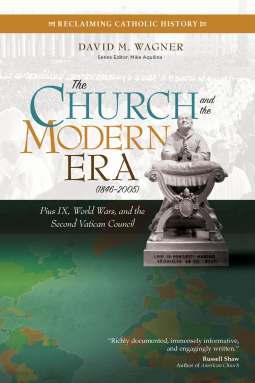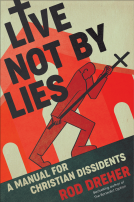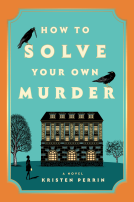
The Church and the Modern Era (1846–2005)
Pius IX, World Wars, and the Second Vatican Council
by David M. Wagner
This title was previously available on NetGalley and is now archived.
Send NetGalley books directly to your Kindle or Kindle app
1
To read on a Kindle or Kindle app, please add kindle@netgalley.com as an approved email address to receive files in your Amazon account. Click here for step-by-step instructions.
2
Also find your Kindle email address within your Amazon account, and enter it here.
Pub Date Aug 21 2020 | Archive Date Oct 14 2020
Talking about this book? Use #TheChurchandtheModernEra18462005 #NetGalley. More hashtag tips!
Description
Lourdes and Fatima, war, Vatican I and II, Fulton Sheen, St. John Paul II, and the clerical sex abuse crisis: These are just a few of the people and events that helped define the Catholic Church in the modern era, the period between 1846 and 2005.
The call to live the fullness of our faith has not changed since the time of the first disciples, but in The Church and the Modern Era (1846–2005), author David Wagner explores how the Catholic Church met the challenges of the industrial age, world wars, the sexual revolution, and technological advancement in an increasingly secular world.
The “modern era” of the Catholic Church began with the election of Blessed Pius IX in 1846 and ends with the death of St. John Paul II in 2005, the last pope to have served as a council father at Vatican II. With monarchies falling, nation-states rising, and industrialization and mass migration underway, the world in which we live changed more during this period than any other, David Wagner contends. While the Church may feel more user-friendly and less formal than ever before, what we believe has been handed down from the beginning.
Wagner will reintroduce you to some of the era’s most powerful examples of virtue and faith such as St. John Henry Newman, St. Thérèse of Lisieux, St. Josephine Bakhita, St. Faustina, and St. Maximillian Kolbe. He will also dispel some of the long-held misconceptions about the Church that span the 160-year period.
In The Church and the Modern Era, you will learn:
· The Catholic Church is the world’s most powerful advocate for workers, the poor, and human rights.
· The Church’s social teaching does not endorse any economic or political systems.
· The Second Vatican Council did not change Catholic teaching on faith or morals.
· The Church’s teaching on human sexuality is the real sexual revolution.
· The Church has been an advocate for raising the status of women, championing women’s rights to education, to work, and to equal pay.
The Church and the Modern Era includes a map and chronology.
Books in the Reclaiming Catholic History series, edited by Mike Aquilina and written by leading authors and historians, bring Church history to life, debunking the myths one era at a time. This volume includes a series epilogue by Aquilina that examines the decades since the death of St. John Paul II and provides a look ahead.
A Note From the Publisher
Wagner earned his bachelor’s and master’s degrees from Yale University, where he specialized in theological and institutional Church history. He earned his law degree from George Mason University in 1992 and received American Jurisprudence awards in 1989 and 1991. His work has appeared in many publications, including First Things, National Catholic Register, Crisis, National Review, The Weekly Standard, and City Journal. Wagner covered the 1985 Extraordinary Synod on Vatican II for The Washington Times. He also contributed to the book Liberalism at the Crossroads.
Advance Praise
“Richly documented, immensely informative, and engagingly written, David Wagner’s The Church and the Modern Era (1846–2005) traces the story of Catholicism from the pontificate of Blessed Pius IX through the pontificate of St. John Paul II. These were the peak years of the Modern Era, when the explosive growth of scientific knowledge and technological proficiency vastly expanded the human capacity for both good and evil, while millions celebrated freedom even as they fell prey to the dictatorship of relativism. This book offers an illuminating introduction to a crucial period in which the Church faced the challenge of announcing the Good News of Jesus Christ to a befuddled world.”
Russell Shaw
Author of American Church
“Telling the stories of the popes who shaped history in the modern world in The Church and the Modern Era (1846–2005), Wagner gives the reader a whirlwind tour through the encyclicals, political battles, and spiritual struggles of the successors of St. Peter. This is a book every Catholic should read, reflect on, and utilize in understanding the Catholic Church in the modern era.”
Steve Weidenkopf
Author of Timeless: A History of the Catholic Church
“Between the election of Pope Pius IX in 1846 and the death of Pope St. John Paul II in 2005 the Church held two Vatican councils and witnessed two world wars, the rise of totalitarianism, and the sexual revolution. The same tumultuous period produced saints such as Thérèse of Lisieux, Maximilian Kolbe, and Mother Teresa of Kolkata. This well-researched, intelligently organized, reader-friendly guide makes sense of it all.”
Jane Greer
Reviewer at Angelus
“Learning about the Church’s place in modern history is an incredibly fascinating endeavor and David Wagner has brought it to the popular level in his book The Church and the Modern Era (1846–2005). By effortlessly weaving the facts of history with the stories of incredible saints who lived through the events themselves, Wagner has given all of us a beautiful opportunity to delve into modern history from a Catholic perspective.”
Tommy Tighe
Author of The Catholic Hipster Handbook
Available Editions
| EDITION | Paperback |
| ISBN | 9781594717871 |
| PRICE | $17.95 (USD) |
Featured Reviews
As a convert to the Catholic Church, this book has become a new, favorite resource for me. Growing up Protestant, I was schooled in the reformation, Luther, Wesley, Calvin and so forth. However, when I came home to the Catholic Church, I found myself a bit lost when it came to my knowledge of the popes, many of the saints, appearances of Mary and many aspects of Church history. (Also, to my absolute joy, this book is one in a series! So now I can learn even more! Cue the confetti.)
This book is packed full of information and covers some of my very, very favorite saints; Saint Faustina, Saint Josephine Bakhita and Saint John Henry Newman, to name a few. The time period ranges from the election of Blessed Pius IX to the death of Saint John Paul II, a period of Church history that I was greatly lacking in knowledge of. But the greatest thing about this book is that it is written to be understandable. It isn't so lofty that I need a commentary or cliff notes, nor is it so elementary that I feel that I am learning nothing. It was written beautifully and comfortably, but at a level that required me to slow down and study a bit. Literally my favorite type of writing on the planet. A definite recommend!
David Wagner has admirably carried out the unenviable task of producing a concise introduction to the history of the Catholic Church since 1846, an era of rapidly shifting ideologies and world affairs.
This work is chronologically placed as the seventh volume of Ave Maria Press’ “Reclaiming Catholic History” series, which endeavors to provide a series of short, accessible introductions to eras of Church history. What sets this series apart is its approach to history which desires to free itself from the primacy of the present age in order to take seriously the world which the subjects inhabited and moved through, consequently taking religious motives seriously and, for the believer, the Providential acting of God in history.
Wagner succeeds at his task by evaluating the era in light of its pope and councils, a top down approach which helps show that the Church was not a passive or reactionary force in the modern world - but was a prophetic voice making new eternal truths. This does complicate the ability to examine as fully the non-papal developments of the era or to have the same natural flow in some of the ‘You Be the Judge’ and ‘Up Close and Personal’ features when compared to other volumes in the series. However, I think this reflects more on the modern distemper and developments trying to be covered in such a short work than the ability of the author.
This is a valuable resource for Catholics trying to understand the role of the Church in the modern world, produced by an author whose academic and professional background lends itself to the task.






